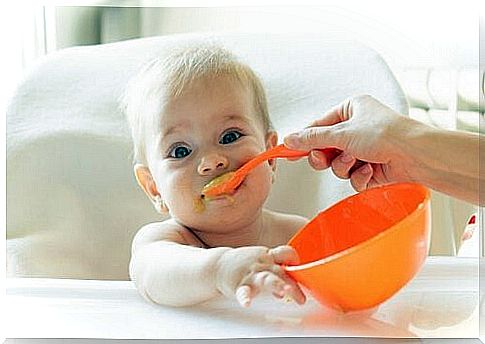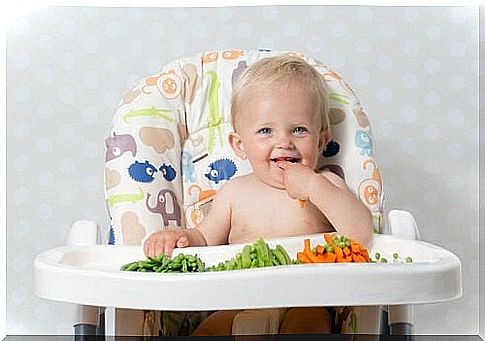When And How Is A Baby Given Solid Food?

For the first few months, the baby’s entire diet consists of breast milk or breast milk substitute if the mother is unwilling or unable to breastfeed. When the child reaches the age of six months, it is time to start expanding the diet, that is, to gradually introduce the child to solid food.
In general, the birth weight of babies has doubled about four months after birth. At this point, the child is often ready to taste the first semi-solid foods. However, it is not advisable to start feeding solid foods without the approval of the clinic nurse or doctor
Solid foods are a whole new world for baby
The first and most important thing to consider when expanding a baby’s diet is that the change should be implemented slowly and at the pace of the child. Very often the baby spits out of his mouth the first spoons of new food, which is perfectly normal, as it is a new taste and texture for him. Also, the baby may not yet have the ability to move food to the back of the mouth for swallowing to be successful.
It’s good to keep in mind that your baby has never tasted anything other than breast milk or a substitute that is a neutral-tasting sweetish liquid. It is therefore important that he is given time to get used to the new flavors and thicker compositions. If the food is too thick for the baby, a little water can be added to it at the beginning.
Patience is rewarded
Start with only half a spoonful of food. Help with positive reinforcement and talk to your baby throughout the process – using, for example, “Doesn’t this look good?” -type sentences.
Remember that your child may not know how to deal with new foods. He may be confused or tilt his head back. He can play with food in his mouth or fight it completely. All of this is perfectly normal, so don’t lose your patience.
One way to expand a child’s diet is to provide him with breast milk or a substitute along with solid food. You can feed him alternately half a spoonful of food and half a spoonful of milk.

The baby should be introduced to the foods one at a time. This way, you make sure your child gets used to trying all types of flavors and eating new foods. We recommend waiting for 5-7 days before trying another new product after a new meal, in addition to which it is not advisable to mix different ingredients. This makes it easier to identify potential food allergies and intolerances.
You can start with cereals
Fortified cereals are a good source of iron and B vitamins for children. They also help give your little one the calories they need. Small amounts of simple cereals, along with breast milk or a substitute, are a convenient choice so you can give your baby a touch of solid foods.
Remember that you should never put cereal in a baby bottle, as this is a risk of suffocation. In addition, giving your baby cereal in a bottle when your doctor has not recommended this practice can cause his or her weight to gain too much.
Proceed to vegetables and fruits
Typically, parents start with a supplemental diet by first incorporating simple cereals, i.e., one cereal at a time in the cereals. There is no evidence that solid foods should be included in any particular order. However, we recommend that you start with cereals and then move on to the vegetables, and then the fruits.

Getting your baby used to eating vegetables at an early stage is a good idea. Yes, we know that toddlers and even older children very often reject these products, but in fact, babies get used to the taste of vegetables much more easily. So here’s one good reason to start with vegetables early!
Start by giving your baby vegetables at lunchtime. Later, you can offer him mashed fruit as a morning or afternoon snack.
Each child progresses at their own pace
Do not force a child to eat if he cries or turns his head away when you offer new food. If your baby repeatedly refuses to eat, it may be best to go back to just giving him breast milk or a substitute and continue doing so for a while.
You can try serving other foods later, and remember that getting your child to eat new products is a gradual process. And after all, your baby will get the nutrients they need at this point from breast milk and / or a substitute.
In order for your child to have a healthy and varied diet in the future, it is important that he or she gets used to eating different foods as a baby. This is also the time when the child should be taught how to control their own appetite.
So don’t force your baby to eat more than he wants so he can learn to recognize that his stomach is full. And on the other hand, if your child has already eaten everything and is still hungry, give him more food or offer to breastfeed or give a bottle so he doesn’t run out of too little food.








